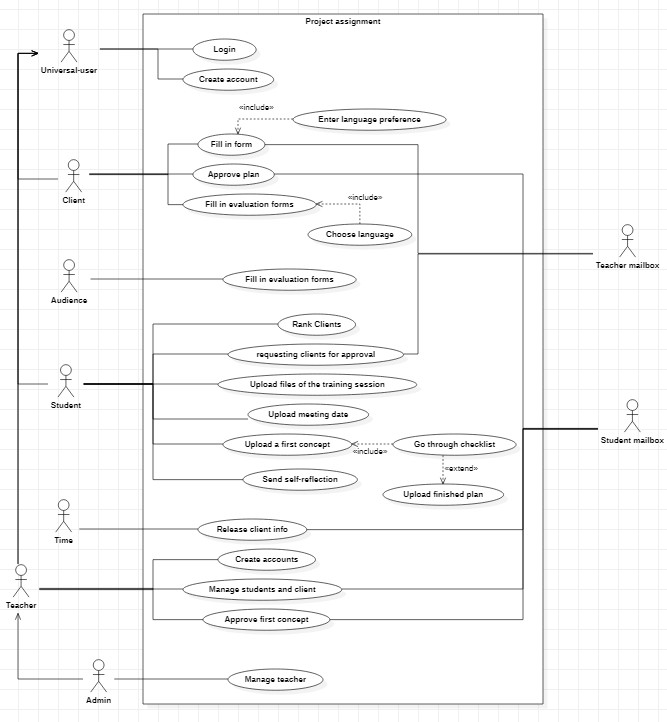-
Email
[email protected] -
Phone
+32 472 31 34 79 -
BirthDate
-
Location
3920 Lommel, Belgium
Training Session Management System Analysis
2024/10 - 2024/12
Introduction
This project involved working closely with a real client to design a Training Session Management System. The goal was to streamline how students, clients, teachers, and administrators interact in the context of academic workshops. Through requirements analysis and use case modeling, we laid the foundation for a scalable and secure platform that enhances collaboration and maintains data integrity.
Technologies Used
Although the project focused on analysis and planning rather than implementation, we used several tools and methodologies:
- StarUML for creating the use case diagram
- MoSCoW method for prioritizing functional and non-functional requirements
- Figma to design an interactive prototype
- Word for documentation
- Client Interviews for real-time communication and requirement gathering
My Role & Contributions
I actively participated in both the client communication and technical documentation processes. I helped structure and occasionally lead the interviews, took notes during meetings, and contributed significantly to the use case diagram. I also played a key role in drafting the requirements analysis document, ensuring that all stakeholder needs were clearly represented and accurately prioritized using the MoSCoW framework.
Development Process

We began by organizing a client meeting where we asked targeted questions to clarify the scope and goals of the application. After identifying the key stakeholders and system goals, we constructed a use case diagram to visualize user interactions with the system. We then compiled a detailed list of functional and non-functional requirements and prioritized them using the MoSCoW method. The process was collaborative and iterative, with regular meetings and feedback from both the client and our instructors. Finally, we created a Figma prototype to bring the concept to life.
Challenges & Solutions
One major challenge was translating vague and evolving client expectations into concrete technical requirements. We addressed this by asking clarifying follow-up questions and using example scenarios to better define each use case. Another challenge was keeping the documentation comprehensive yet digestible. We solved this by keeping the use case diagram focused and the requirements well-categorized.
Outcome / Results

We delivered a complete requirements analysis document, a clear use case diagram, and an interactive Figma prototype. The client appreciated the clarity and structure of our deliverables, particularly the way we broke down functionalities and prioritized them. Our work laid a strong foundation for potential future development and was positively evaluated by both the client and our instructor.
Reflection
This project strengthened my ability to communicate with non-technical stakeholders and transform abstract ideas into structured, technical documentation. I learned the importance of stakeholder engagement and prioritization methods in early-stage planning. Creating the Figma prototype helped bring the vision to life and showed how useful visual tools are in gathering feedback. If I were to do the project again, I’d introduce clickable wireframes even earlier in the process to align expectations sooner.